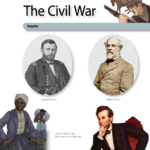This case summary provides teachers with everything they need to teach about Dred Scott v. Sandford (1857). It contains background information in the form of summaries and important vocabulary at three different reading levels, as well a review of relevant legal concepts, diagram of how the case moved through the court system, and summary of the decision. This resource also includes five classroom-ready activities that teach about the case using interactive methods. High school level also available.
The Pursuit of Justice
The Pursuit of Justice book, written by Kermit L. Hall and John J. Patrick, analyzes 30 Supreme Court cases chosen by a group of Supreme Court justices and leading civics educators as the most important for American citizens to understand. An additional 100 significant cases included in state history and civics standards are summarized. The complete book or individuals chapters can be downloaded.
Learn About Black History, Culture and Politics
Learn about Black history in the United States before and after the Civil War; the Civil Rights Movement; the history of Africa; African American art; and African American trailblazers.
What Does It Mean to Be a Good Citizen?
This is the first lesson in Khan Academy’s new high school civics course. This lesson focuses on what it means to be a good citizen, what civil society is, and what are democratic principles and civic virtues.
Landmark Supreme Court Cases
In a partnership with the National Constitution Center, Khan Academy talked to constitutional scholars about ten of the most significant Supreme Court cases in history. Teachers can use this lesson as a supplemental resource during their Supreme Court unit to show how constitutional scholars can debate the outcomes of Supreme Court cases, as well as the impact these cases have had on the United States.
The Civil War (CKHG Unit)

This unit explores the political, historical and cultural causes and consequences before, during and after the Civil War, one of our nation’s greatest crises. Across 24 lessons, students engage with the material through primary sources and consider the influence of abolitionists and other intellectual as well as military and political figures.
This unit includes 24 lessons that are about 45 minutes each.
Slavery: No Freedom, No Rights (Lesson Plan)
Examine the history of slavery in the United States. Trace the development and expansion of slavery in the 19th century and learn about the conflicts and compromises that occurred prior to the Civil War and the abolition of slavery.
From the basics about slavery to the attitudes that defended it and the efforts of those who wanted to see it abolished, in this lesson students learn about this dark part of America’s past.
** Please note: The section about the Missouri Compromise and the Compromise of 1850 has been moved to a new mini-lesson called Slave States, Free States that explores the debate about the expansion of slavery. We recommend teaching this mini-lesson along with the Slavery lesson. Find it in our Geography Library.
